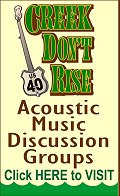 Autoharp Precursors and Competitors |
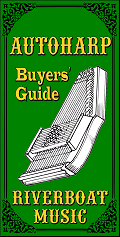 |
| 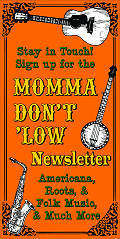

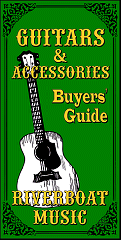
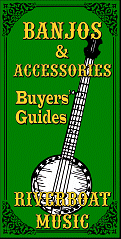
| Autoharp Precursors and CompetitorsEditor's Note: When I was first shopping for and writing about autoharps, I kept coming across other instruments that people were calling autoharps. In fact, I recognized one that I had bought decades earlier at a garage sale and later donated to a school organization. The short version is that in the mid-to-late 1800s, there was a huge market for instruments that could bring music into the home without requiring lessons or room for a piano - more about that further down. And the number of inventions to fill that need was astounding. Some of the instruments listed below may have preceded the autoharp. Several probably followed its introduction. But because the records of their manufacturers have long since disappeared, I'm not going to commit to which is which. I'm just presenting some interesting instruments that are often called autoharps but are simply similar designs that may have a common origin. We now return you to our regularly-scheduled program. :-) Folks shopping for autoharps often come across instruments that look vaguely like autoharps or look like autoharps designed by Salvador Dali. Unfortunately folks selling such instrument almost always call them autoharps, which has fooled more than one newbie into paying too much for something that is really only an unplayable curiousity or wall decoration. Though there are many examples that could be covered in this article, I'm focusing on the ones I keep coming across. These are representative of most classes of pre-autoharp instruments that are often erroneously labeled "autoharps." To be fair, ALL of the instrument families we discuss on this page could sound very nice when played by someone who really took the time to learn them. If one that is playable comes your way and you want to learn to play it, GREAT. But the vast majority have already been damaged by poor storage, etc. by the time you see them. And even if they are playable, there is not a high demand, because they never passed into common use like, say, the banjo, mandolin, or ukulele. Resale value-wise, only a handful of people collect them. If a collector already has the model you own, he's not likely to need another one. So, Great-Grandma's old Marxophone or whatever is NOT very likely to put your child through college, or even tires on you car. If you already have one of these this article may help you figure out what you have, or at least what class of instrument it belongs to. If you are looking for an autoharp and see one of these that you're thinking of buying instead, that's fine, too. Just remember it's not an autoharp, and there aren't any instructors or books for most of them, so you WILL be on your own. That said, this article also celebrates some of the great, if failed, attempts to put music into homes over the decades in which they were made. A Common Ancestor - the German Fretted ZitherUntil the dawn of radios and phonographs, the only way to have music in your home was to make it yourself. Unfortunately, not every family could buy instruments and pay for lessons. A number of inventors realized that such families might still be willing to pay for "musical instruments" that supposedly had no learning curve. A wide range of instruments were sold door to door in North America and Europe. Most were variants of a German-built zither. So that's where we'll start, even though hardly anybody confuses these with autoharps.
In the late 1800s, one of the most common German zither setups was played on the knees or on a table. It had a fretboard closest to the player for playing chords. The player would fret the fretboard with the left hand. He or she would strum the chords and pick out melodies on the individual strings with the right hand. These instruments have a unique sweet sound (later popularized in the US through the theme of Orson Welles' The Third Man.) However you still had to learn how to form chords with your left hand. German and German-born instrument designers on both sides of the Atlantic took it upon themselves to make the zither easier to play. Forget the Fretboard, We Make the Chords For You
On this example, made by German-American manufacturer Oscar Schmidt, the preformed chords are Bb, D, F, G, and C. The individual strings give you a chromatic scale in two octaves. The photo below shows the chord and note name label from the zither shown to the right. You can see that it is ideal for playing 3-chord songs in the keys of F, C, and G. The black and red note names correspond with the white and black keys of the piano.  This design of zither was sometimes called a "guitar zither." Similar models with doubled melody strings were called "mandolin zithers." Of all the instruments shown on this page, this class of zither is the only one that survived well into the 20th century. During the East German era, many were labeled "Musima" or "Jubeltone." In fact, some are still made today, by the Hopf family in Germay. Several magnificent models have recently been available, including this Hopf-labeled model. Such instruments protected you from having to learn chord shapes on the fingerboard, but they limited you to songs in one or two keys. You also still had to be very precise with your right hand to pick out the melody. And you could still hit notes from other chords if you weren't careful when you hit the preformed chords. We Can Even PLAY the Chords For You
A number of instruments tried to make it simpler to hit the chords you wanted to play. The "Chartola" shown at the right had buttons for playing the chords, but only four chords. According to one expert on the subject, the buttons were in case you needed to bang out a chord in a hurry, but players would still strum the chord strings as well. You'll notice that the melody strings are diatonic only, and that they are doubled. By the way, I once owned an instrument very similar to the Chartola shown in the photo. Instead of buttons, it had a metal plate with staggered slots in it over the chord strings. You'd play the chord you wanted by strumming over the appropriate open slot. The one I owned ($2 at a garage sale) was unplayable and unrestorable and disappeared after being used as a prop in a high school musical. I don't mourn it. Later versions of the Chartola lost the goofy lyre arm shape and baluster-shaped carrying handle. Most of the examples I've seen have a $30 price printed right on the sticker inside the hole - the cost of a new appliance during the era these were being sold.
Apparently a number of instruments labeled "Pianoette" also had buttons for hitting the chords. But according to several experts, the names Pianoette and Pianola were used willy-nilly and nearly interchangeably by several manufacturers. The "Pianoette" at the right is interesting because it used felt dampers to block out the chords you didn't want to play, not unlike an autoharp, which blocks out the individual strings you don't want to play. Of course, you could ignore the dampers and strum the chords yourself if you wanted. Like the Chartola above, the melody strings are doubled and diatonic. Or We Could Help You Play the Melody Strings InsteadOn the opposite end, there were instruments that let you play the melody strings with pushbuttons.
Like the Chartola and Pianoette shown above, this Marxaphone's melody strings are doubled and diatonic. When these turn up, they are often missing the mechanism. Of course the vendors won't tell you you're only buying a partial instrument. Often they don't even know. I'm told that the Victor Harp shown to the right made playing the melody easier by adding buttons. The metal plate holding the buttons would move back and forth. So you could push a button, then slide the plate over to make it pluck the string once. If you wanted a continuous picking sound like a Venetian mandolin, you could keep sliding the plate back and forth. For the fun of it, we've added a blowup of the button section of the "Victor." 
Notice that the notes of the diatonic scale are not all in the same row. Instead the "bottom" row has the following chords "built in": C, Em, G, and F. The middle row had Dm, F, Am, C, and Em chords. That way you could easily play chords that weren't pre-formed for you. By wiggling the metal plate back and forth, you could play those chords in Venetian style. I imagine that gave your right arm a workout. That said, these instruments were pretty darn clever. When a salesman who could play them would show up at your door and make beautiful music with them, who could resist, especially when they were sold on terms like $1 down and $1 a week? Door-to-Door DynamicsIf you have see the musical The Music Man, where the traveling salesmen are arguing on the train, you should know that this was a major way to sell products from about 1870 to 1929. They were called "drummers" because they were sent out to "drum up" business. Most went to "general stores," but men who sold encyclopedias, Bibles, and instruments like the ones on this page went door-to-door.Consequently, some of the instruments you come across have "salesman's sample" or some such printed on the lable. That was the unit the salesman used to convince folks to order their own instrument. Often they're in better shape than the ones that actually went into homes, because the salesman would protect his investment. But they're about the same as many of the instruments that came into homes. When Alfred P. Dolge began manufacturing autoharps, he also began advertising heavily in magazines, as well as selling through mail-order stores like Sears and Roebuck, so the door-to-door era of the autoharp precursors gradually came to an end, along with the instruments they sold. But if your great-grandma had one of the instruments on this page tucked away somewhere, chances are that her parents bought it from a door-to-door salesman who wowed them with a performance of the one song he knew. Whether great-grandma ever reached that level of proficiency on the thing is anyone's guess - you couldn't get lessons and you had to order the sheet music for them from the manufacturers. Nowadays, of course, you can't get that either. ConclusionThese are the examples I keep coming across, though they are only the "tip of the iceberg." Each brand represented made several configurations, and many other companies imitated or made variations of the instruments shown.I'm sure you can see that it wasn't a big leap from ANY of these to the earliest autoharps. When you hear these played, you'll realize that all of them are louder and sweeter than autoharps. The big difference is that they're all a little harder to play, and the door-to-door salesman model was soon eclipsed by the mail-order model. If you want to learn about countless other instruments in this class, the "Fretless Zithers" web page is probably the best overall source. (Don't try to go to their old URL of FretlessZithers.com, though - that URL has been taken over by hackers.) Appendix 1: Another Common Non-Autoharp Autoharp listings often include instruments that used to be autoharps but have had all the chord bars and related mechanisms removed. Often they want the same price for them as folks are charging for actual working autoharps. Autoharp listings often include instruments that used to be autoharps but have had all the chord bars and related mechanisms removed. Often they want the same price for them as folks are charging for actual working autoharps.
Don't be fooled. Though this is an autoharp body, it is not, technically an autoharp at all. It won't ever be unless you want to invest money and time into purchasing chord bars, combs, springs, etc. and installing them yourself.
And please stay in touch!
|
|
All material, illustrations, and content of this web site is copyrighted ? 2001, 2002, 2003, 2004, 2005, 2006, 2007, 2008, 2009,
Note: Creek Don't Rise (tm) is Paul Race's name for his resources supporting the history and music of the North American Heartland as well as additional kinds of acoustic and traditional music. For questions, comments, suggestions, trouble reports, etc. about this page or this site, please contact us.
| ||||||||||||||||||||||||||||||||||||||||||||||||||||||||||||||||||||||
